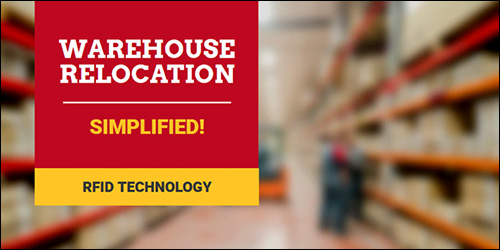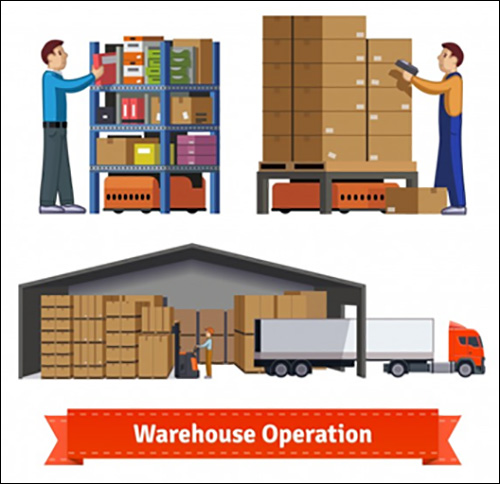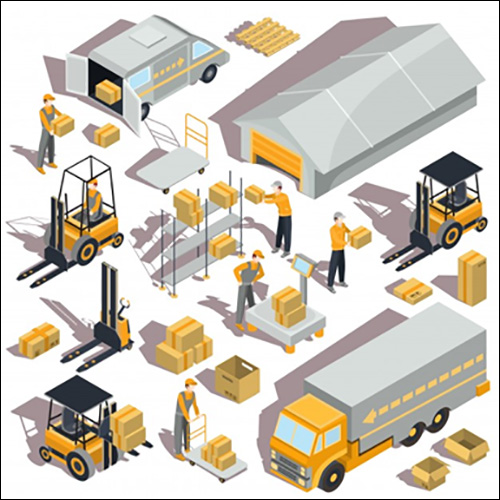Jun 12, 2018Is your company growing? Are you relocating your warehouse due to some unexpected reasons? Or, even worse, are you downsizing? There can be other reasons as well, like rental agreements coming to end. But whatever the reason may be, it surely is the time to relocate your warehouse. A warehouse relocation comes with a number of logistical challenges and hassles for managers—the challenges of managing inventory and assets.

It can be very difficult to keep track of items in these large spaces, in which hundreds of people are employed. Think about what a mess it could become when you are moving hundreds and thousands of items from one warehouse to another. There are high chances that employees might intentionally or unintentionally move items to the wrong locations, and manual processes can be costlier than expected.

Below, I'll talk about how the use of an RFID-enabled solution can simplify warehouse relocation for you—with best practices and myths briefly highlighted.
RFID technology is growing as more companies and industries invest in the technology. Consequently, it is becoming more cost-effective as well for solving business challenges. According to research and market reports, the global sourcing of RFID tags is predicted to have a compound annual growth rate of 22.4 percent through 2018.
Did you know? The smallest RFID tag is manufactured by Hitachi. It measures 0.01 inch square.
What RFID technology does is simplify asset and inventory management for you, by creating a real-time record of where all items are located. Employees don't have to go on a scavenger hunt for lost items when relocating a warehouse.
A relocation can be of any type—within a building, within the same city or country, or outside your country. That being said, it is vital that proper warehouse relocation take place. It might require the supervision of the warehouse manager: before and after the move, the use of equipment specifically designed to carry out a smooth relocation of a storage facility from one place to another, the process of adjustment of storage units, professional packaging to avoid any damage in the process and, above all, the maintenance check.
All of the above activities can be made easy with the right process and the right solution to implement that process. Here's what happens when an RFID asset-tracking solution is implemented for warehouse relocation:
1. It Increases Efficiency With RFID Tagging
One of the main purposes of using RFID technology is to increase warehouse efficiency by reducing logistics and labor costs, which can otherwise soar high. This increases the pressure on profit margins in today's already competitive market. What makes it cost-efficient is the fact that warehouses are now able to streamline several operational areas inside their premises. RFID tagging serves you right when relocating a warehouse.
Not long ago, one of my friends shared their experience with RFID technology for warehouse relocation. My friend's company was able to have accurate inventory of all the items and equipment, and where all of them were located. It was able to plan the relocation efficiently due to RFID tags. As described above, packaging was done and destination information was stored in the system. Mistakes did happen and items did end up misplaced, but it happened due to incorrect labeling, not because of the system.
The best part about having all of the items tagged was that the firm had installed RFID readers at its primary exit and entry doors. This enabled it to track movements at the destination locations, and to send back any items that were incorrectly delivered. This, in short, has not only improved its logistics management, but also amped up workload efficiency, as well as its control over the storage and movement of materials within the warehouse.
The success of this entire process during warehouse relocation depends on the ability to obtain consistent reads from RFID tags. Here are 13 tips for in-the-field tagging, to help you successfully deploy RFID tags.
2. It Increases Asset Visibility With Real-Time Data
What a relief it would be if you were able to immediately locate all the things you have ever lost or misplaced, right? RFID asset tracking allows you to do exactly that. After all, they are not wrong when they say you cannot manage what you cannot see. When you move from one warehouse to another, things can become messy and you can have a higher chance of overlooking and eventually losing things. Increased visibility lets businesses resolve issues that stem from oversight, misplaced materials, poor organization and mistakes due to manual processes. RFID asset tracking offers you the convenience and necessity of increased asset and inventory visibility.
Perhaps the greatest benefit of RFID is the peace of mind that comes with the ability to track your assets in real time. Similarly, it can help you to provide this data in customized formats to auditors, vendors and customers. To simplify it further, RFID tags can be read from anywhere within a facility, so that employees can instantly find out the amount of each item and its location, along with the whereabouts or status of a shipment, or items that have left a warehouse. This data can be used in identifying production, availability or maintenance issues—and, hence, appropriate preventive actions can be taken accordingly.
3. It Improves Employee Productivity With Organized Tasks
Like bar-code technology, RFID does not require your staff to be within line of sight of a product or asset in order to locate it. They don't have to waste time on labor-intensive processes, such as scanning individual items, looking for misplaced equipment or tools, or counting inventory amounts. This eventually increases the speed of task completions, movement from one warehouse to another and project turnover, by reducing carrying and labor costs.
RFID technology enables a business to keep track of moving assets that are passing from one warehouse to another, through multiple departments or teams. When assets have RFID tags attached to them, these items can be automatically scanned as they move throughout your operations. It becomes a much quicker and more painless process for not only warehouse-management personnel, but also the operations department.
Did you know? Warehouse operators spend 20 percent of their time dealing with paperwork and other related activities.
Increasing asset and inventory visibility, along with eliminating manual processes, can help to reduce oversight and human errors. The technology can help you streamline asset assignments for employees, and free up your staff to work more on areas that can positively affect your bottom line. Here are some common RFID myths, debunked neatly!
4. It Mitigates Risk, Theft and Loss With Accountability
Employees in the warehouse, especially picking operators, are among the most important keys to reaching performance benchmarks. RFID asset-tracking solutions allow warehouse operators to easily and quickly gain access to inventory location and other information. This helps them to keep track of items replenished, distributed, stored and moved.
Such visibility doesn't leave any room for foul play or error while you move your warehouse to a different location. With the ability to track the movement of every asset in your warehouse, you can ensure that all items are being accounted for, and thus mitigate costly risks like counterfeiting, theft, loss, misdistributions, misplacements and recalls. Even if you are not relocating your warehouse, it is vital to avoid such mistakes, as they not only take up time and money to be fixed, but can cause you to incur heavy fines, lawsuits and loss of clients.
In addition, employees will be more careful with all of your products, since they will know they are being patrolled. With complete visibility and real-time information about assets and inventory, you can move your warehouse in a more organized manner without worrying about loss and theft.
Did you know? The FDA has even approved the use of RFID technology to track blood.
With an RFID-enabled tracking system, the entire relocation process, from planning through execution to completion, becomes smoother. This directly impacts your business, as it makes efficient use of your personnel's time, and it brings your business back online with minimal disruption.
Kiran Ajaz is a technical writer and publisher at EZOfficeInventory, which offers RFID asset-tracking software for businesses, logistic companies and more. She is a guest writer and an MBA graduate. Kiran is enthusiastic about the way technology interacts with contemporary businesses and enables them to focus on core efficiencies.



